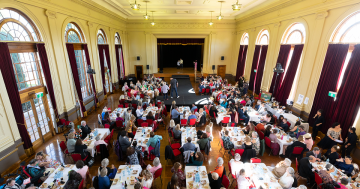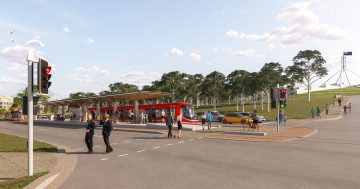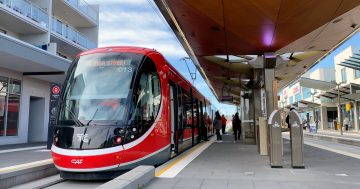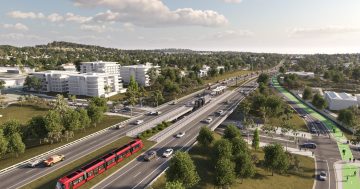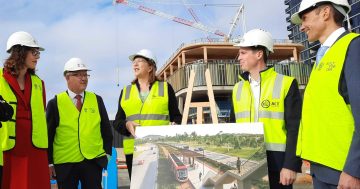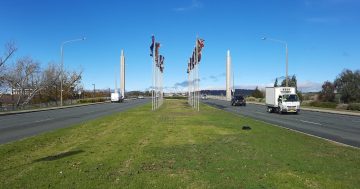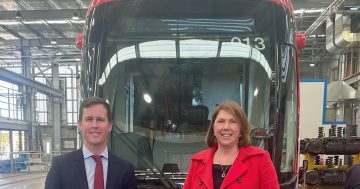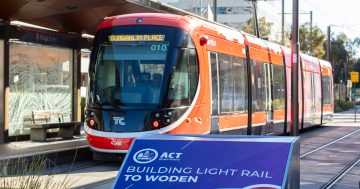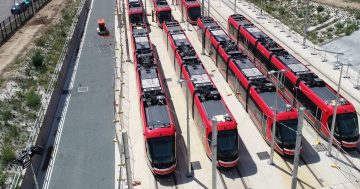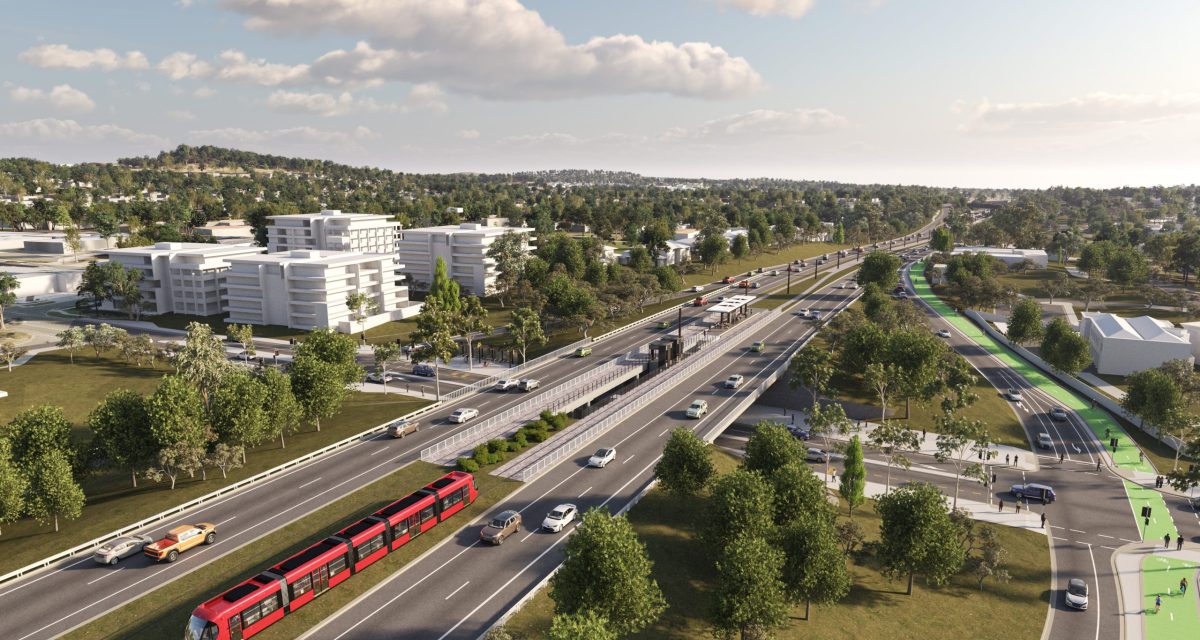
A render of light rail en route to Woden along Adelaide Avenue. Image: ACT Government.
Public transport advocates have hit back at a proposal to scrap future stages of light rail in favour of trackless trams, calling it a “mish-mash of mistruths and half-baked proposals”.
The 21st-Century Public Transport Solutions For Canberra report expresses “grave concerns” about the “excessive and disproportionate amount of money that has been and still is being spent” on light rail.
Penned by the Deakin Residents Association, it argues Stage 2A from Northbourne Avenue to Commonwealth Avenue is already the “most expensive section of light rail ever built” and that Stage 2B from Commonwealth Park to Woden “should not proceed”.
“The billions of dollars spent on Light Rail Stage 2B could be better spent on faster and more modern transport technology … at a fraction of the cost, with far less disruption, and with more short and long-term benefits to Canberrans.”
Stage 2B will take light rail from its stop near Commonwealth Park across the lake, around State Circle (through the intersections at Kings Avenue, Canberra Avenue, Sydney Avenue and Melbourne Avenue), and onto Adelaide Avenue and Yarra Glen. This will involve the construction of a third span through the middle of the Commonwealth Avenue bridge and another seven bridges along Adelaide Avenue.
If the costs are deemed too great or the turn-off from Commonwealth Avenue onto State Circle too narrow, the government has also flagged a reroute through Barton, with proposed stops on King George Terrace, Bligh Street and Sydney Avenue.
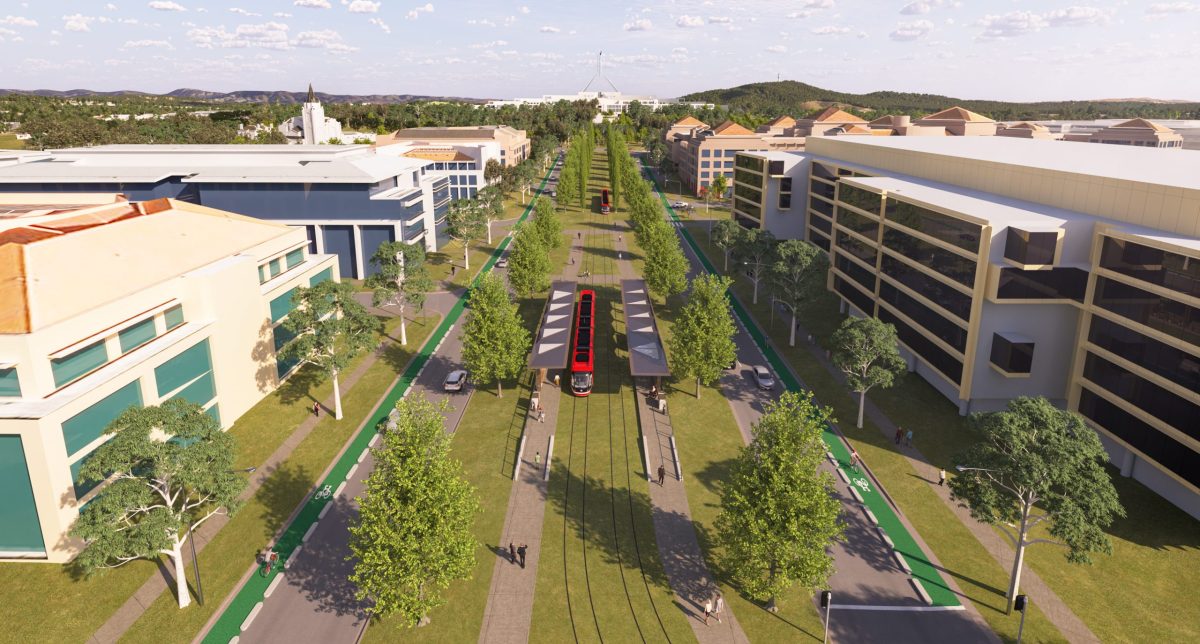
A render showing a proposed stop along Sydney Avenue if light rail has to take the ‘dog-leg’ route through Barton. Image: ACT Government.
The government has allocated $50 million “to progress the planning and design phases”, but estimates beyond that are hazy. A 2019 Ernst & Young economic appraisal report puts the total as $1.09 billion when adjusted for inflation, while the Canberra Liberals suggest the cost could be as high as $3 billion.
The paper’s authors say the government should instead invest in a Bus Rapid Transit (BRT) or trackless tram system along the Stage 2B route, including dedicated lanes and platforms.
“[It] can be built more quickly, is twice as cost-effective, and will be at least 10 minutes faster.”
The savings, they say, could be directed towards accelerating the acquisition of electric buses for the Transport Canberra fleet so “the transition to zero-emissions public transport is completed by 2030”.
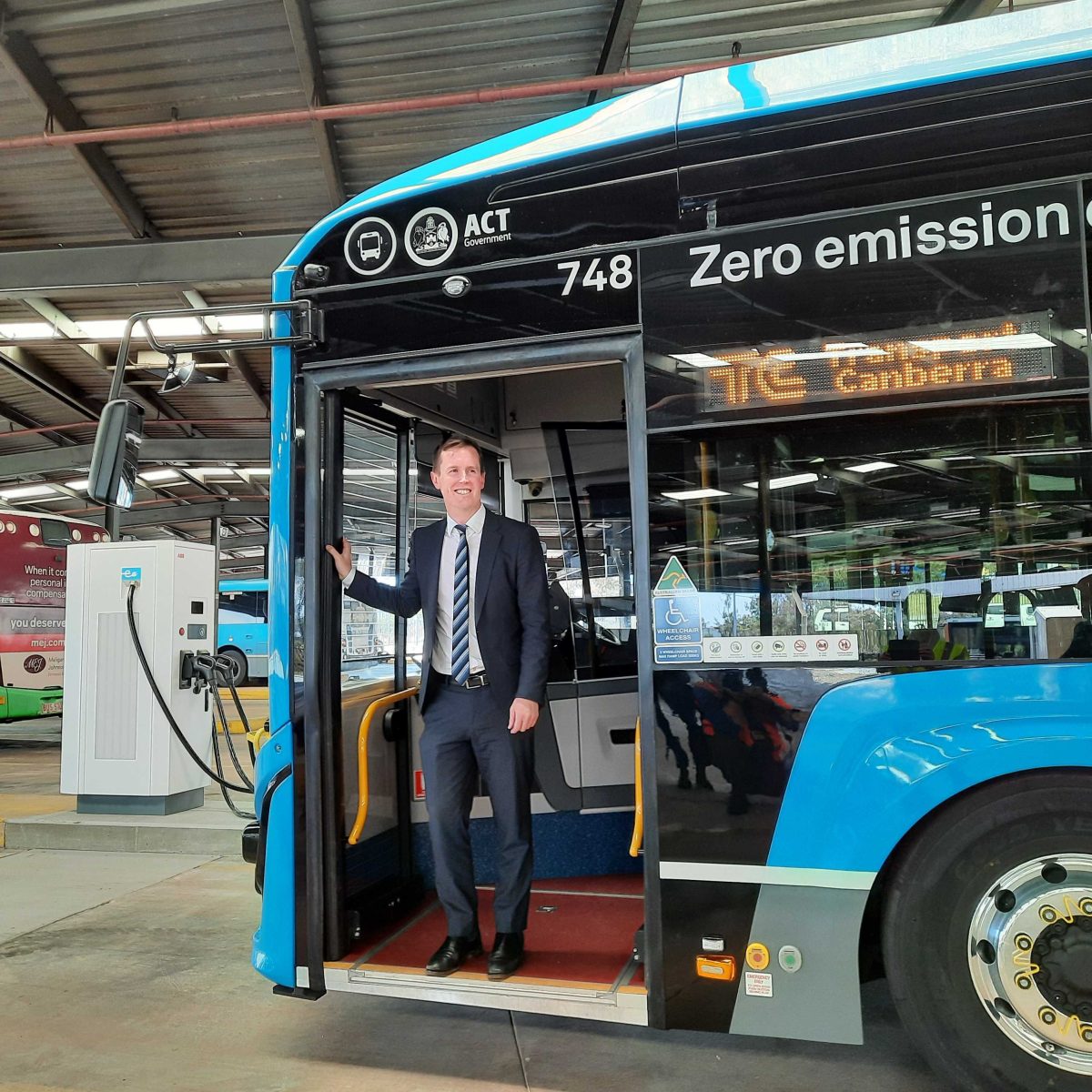
The report says the savings by scrapping light rail could be used to speed up the acquisition of electric buses. Photo: Ian Bushnell.
“In comparison with alternative options, Light Rail Stage 2B will be slower, less flexible in its routing, have greater environmental impacts, be far more expensive and will impose a substantial financial burden on Canberrans for many decades to come,” the paper concludes.
The arguments won the support of the Canberra Liberals, who vowed again to scrap all future light-rail stages if elected in November.
“It paints a very bleak picture about the future of public transport in the ACT if we proceed with the tram that will significantly increase travel times for Canberrans from the south,” Shadow Transport Minister Mark Parton said.
“The Canberra Liberals will put forward a transport policy that will focus on getting Canberrans where they want to go when they want to get there, which will be faster, greener, better connected, and cheaper.”
But the Public Transport Association of Canberra (PTCBR) said, “the report released … by the Deakin Residents Association and other light rail critics is a mish-mash of mistruths and half-baked proposals” and based on “a fundamentally flawed assumption”.
“The report falsely attributes statements to the ACT Auditor-General about the cost of a bus-based alternative to Light Rail Stage 2B and hides the true cost of ‘trackless trams’,” chair Ryan Hemsley said.
“The report … fails to mention the experience of the recent ‘trackless tram’ trial in Perth, which damaged the pavement after only four days of passenger testing. The trial vehicle has now been shipped back to the manufacturer in China, and the state government has refused to support the project.”
He said if the Canberra Liberals base their 2024 transport policy on “this kind of research … it is already dead on arrival”.
The ACT Government affirmed there are no plans to alter Stage 2B.
“The ACT Government is focused on future-proofing our growing city by building an integrated transport network that includes a light rail network and electric bus fleet,” a spokesperson said.












